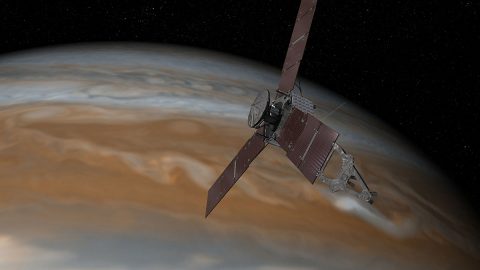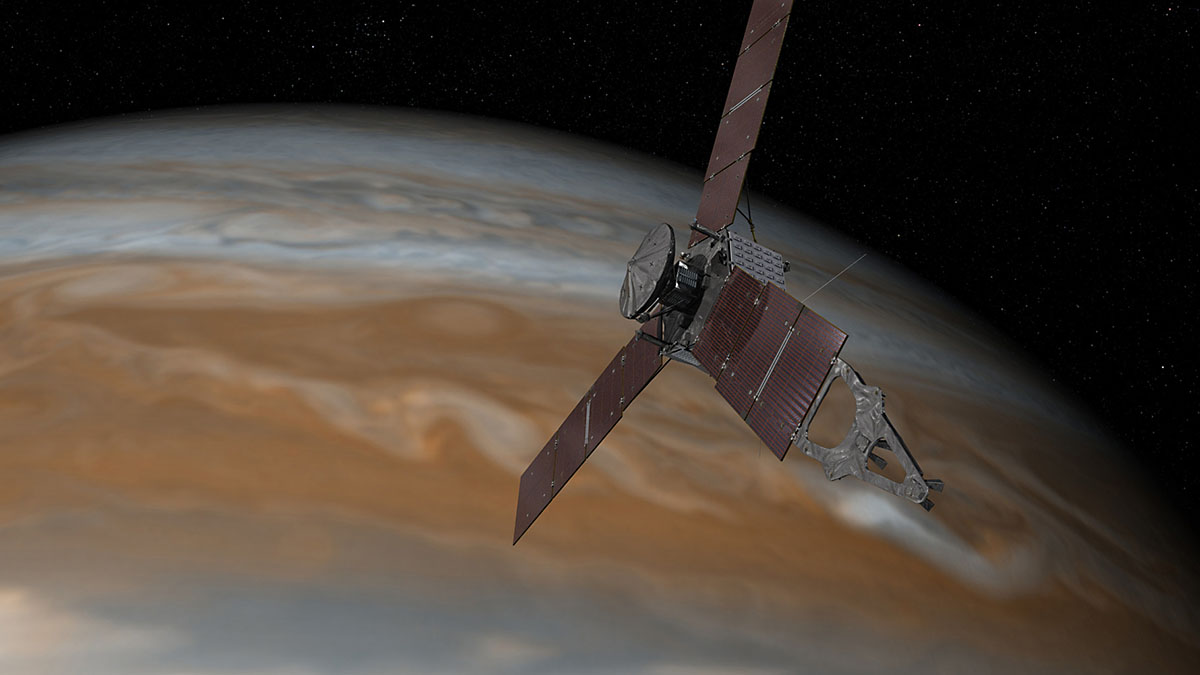Written by DC Agle
NASA’s Jet Propulsion Laboratory
 Pasadena, CA – NASA’s Juno mission completed a close flyby of Jupiter on Sunday, December 11th, its latest science orbit of the mission.
Pasadena, CA – NASA’s Juno mission completed a close flyby of Jupiter on Sunday, December 11th, its latest science orbit of the mission.
Seven instruments and the spacecraft’s JunoCam were operating during the flyby to collect data that is now being returned to Earth. Juno is currently in a 53-day orbit, and its next close flyby of Jupiter will occur on February 2nd, 2017.
On Sunday, December 11th, at 9:04am PST (12:04pm EST, 17:04 UTC) NASA’s Juno spacecraft will make its third flyby over Jupiter’s mysterious cloud tops.

“This will be the first time we are planning to operate the full Juno capability to investigate Jupiter’s interior structure via its gravity field,” said Scott Bolton, principal investigator of Juno from the Southwest Research Institute in San Antonio. “We are looking forward to what Jupiter’s gravity may reveal about the gas giant’s past and its future.”
Mission managers have decided not to collect data with the Jovian Infrared Auroral Mapper (JIRAM) instrument during the December flyby, to allow the team to complete an update to the spacecraft software that processes JIRAM’s science data. A software patch allowing JIRAM’s operation is expected to be available prior to the next perijove pass on February 2nd, 2017.
[youtube]https://www.youtube.com/watch?v=roZyJh9sl6E[/youtube]
The spacecraft team continues to weigh its options regarding modifications of Juno’s orbital period — how long it takes for the spacecraft to complete one orbit around Jupiter. At present, Juno’s orbital period is 53.4 days. There had been plans to perform a period reduction maneuver with the spacecraft’s main engine on October 19th to reduce the orbital period to 14 days. The team made the decision to forgo the maneuver in order to further study the performance of a set of valves that are part of the spacecraft’s fuel pressurization system.
“We have a healthy spacecraft that is performing its mission admirably, and we are able to obtain great science every time we fly by,” said Rick Nybakken, project manager for Juno from NASA’s Jet Propulsion Laboratory in Pasadena, California. “What we do not want to do is add any unnecessary risk, so we are moving forward carefully.”
During these flybys, Juno will probe beneath the obscuring cloud cover of Jupiter and study its auroras to learn more about the planet’s origins, structure, atmosphere and magnetosphere.
NASA’s Jet Propulsion Laboratory, Pasadena, California, manages the Juno mission for the principal investigator, Scott Bolton, of Southwest Research Institute in San Antonio, Texas. The Juno mission is part of the New Frontiers Program managed by NASA’s Marshall Space Flight Center in Huntsville, Alabama for the Science Mission Directorate.
Lockheed Martin Space Systems, Denver, Colorado, built the spacecraft. JPL is a division of Caltech in Pasadena, California.
More information on the Juno mission is available at:
The public can follow the mission on Facebook and Twitter at:



